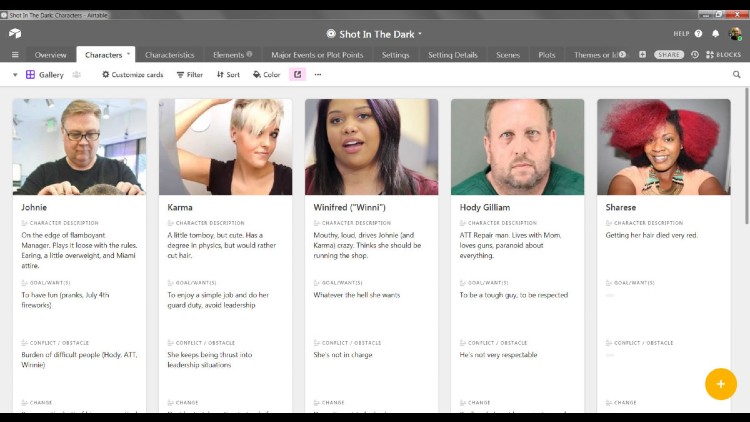Airtable is a fully-featured online, relational database. See how I use it to plot fiction, build characters, and view elements visually as I write.
Hi. I’m Brandon, and I’m an app addict. (“Hi, Brandon.”)
I spend far more time finding, installing, and tweaking writing tools than I do writing with them. I’ve tried them all, from Scrivener to Word, ApolloPad to Novlr. I’ve HiveWorded and Snowflaked my way through so many cool tools that now, before I sign up for a new one, I have to make sure I don’t already have an account.
The Missing Link
Of course, no tool stands alone. I regularly employ a suite of solutions to fit my environment, my task, or my mood. I write with Scrivener. I brain dump and spin “what if” webs with Workflowy. I even use Voice Notes on my phone to talk out scenes while I’m in the car. What I needed was a tool that allowed me to organize and build a story no matter how it came to me.
See screenshots and read the full article at The Writing Cooperative.





